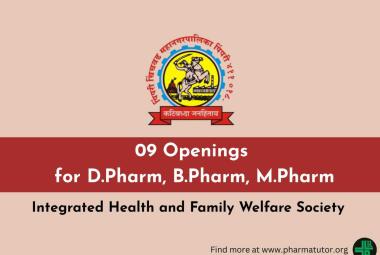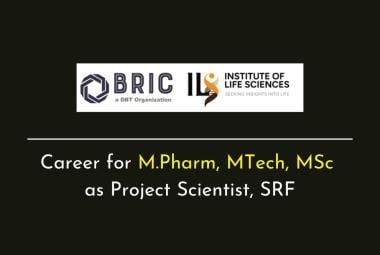{ DOWNLOAD AS PDF }
 About Authors:
About Authors:
M Sushma*, TVV Vidyadhar, R Mohanraj, M Babu
Department of Pharmacy Practice, Raghavendra Institute of Pharmaceutical Education & Research (RIPER),
K R Palli Cross, Near S.K University, Anantapuramu District, Andhra Pradesh, INDIA.
*sushma.banthi@gmail.com
Abstract:
Interstitial cystitis (IC) is an irritative bladder syndrome of multifactorial aetiology and is said to be one of the several conditions that causes bladder pain, which is most commonly seen in women than in men. It is of unknown aetiology. But some factors like autoimmune disorder, Genetic predisposition, Gynaecologic surgery in the past, History of recurrent UTIs. The body's immune system attacks the bladder, similar to other autoimmune conditions. The urologist may use a special scope called a cytoscope to look inside your bladder for inflammation, pinpoint bleeding. Management of IC is done by oral therapy of pentosanpolysulphate, Tricyclic anti-depressants, Anti-histamines, Non-steroidal anti-inflammatory drugs, Bladder analgesics. Whereas intravesical therapy Dimethyl sulphoxide, heparin, Bacillus calmette-Guerin
[adsense:336x280:8701650588]
REFERENCE ID: PHARMATUTOR-ART-2138
|
PharmaTutor (ISSN: 2347 - 7881) Volume 2, Issue 4 Received On: 10/02/2014; Accepted On: 20/02/2014; Published On: 01/04/2014 How to cite this article: M Sushma, TVV Vidyadhar, R Mohanraj, M Babu, A Review on Interstitial Cystitis Syndrome (ICS), PharmaTutor, 2014, 2(4), 31-36 |
Introduction:
Interstitial cystitis (IC) is defined as a chronic inflammatory, irritative bladder syndrome of multifactorial aetiology and pathogenesis and this is said to be one of the several conditions that causes bladder pain & need to urinate frequently and urgently even in the absence of proven urinary infection. The syndrome is characterised by clinical presentation of chronic pain, pressure and discomfort related to the urinary bladder[1]. It is also known as painful bladder syndrome. Interstitial cystitis can be associated with irritable bowel syndrome, fibromyalgia, chronic fatigue syndrome, and other pain syndromes[1].
Epidemiology:
PBS It is most commonly seen in women than in men. More than 3 million cases of American women and 1 million cases of men have associated with Interstitial Cystitis(IC). Clemens et alobserved the prevalence of IC to be 197 cases per 100,000 women and 41 cases per 100,000 men[1][8][9]. Statistics show a prevalence of only 10% of the condition in men. However, symptoms of chronic prostatitis are seen to overlaps with the symptoms of IC in men. Similarly, the prevalence of IC is rare in the paediatric population.[8]
Aetiology of IC:
IC has a multifactorial aetiology. Some of the causes of the syndrome are as follows:
- Associated chronic illnesses such as inflammatory bowel disease, SLE and IBS
- Atopic allergy[1][8]
- Autoimmune disorder[1]
- Genetic predisposition
- Gynaecologic surgery in the past[8]
- History of recurrent UTIs
- Infection with a slow-growing virus
- Pelvic floor muscle dysfunction
- Production of toxic substances in the urine
- Psychiatric conditions such as anxiety disorder and depression
Classification:
IC is divided into two types i.e., ulcerative (classical) and non-ulcerative (Messing-Stamey). This division is based on the intraoperative findings at cystoscopy and bladder over distension[1],[6].
(A)Classical IC:
Around 5% to 10% of the patients with IC have ulcerative IC. The characteristic cystoscopic finding on overdistension of the bladder is a diffusely reddened appearance of the surface epithelium. The dome and lateral walls of the bladder show presence of one or more ulcerative patches and mucosal congestion. Biopsy in patients with classical case of IC shows transmural involvement of the bladder wall with inflammatory changes, granulation tissue, mast cell infiltration and fibrosis.
(B) Non-ulcerative IC:
The cystoscopic findings on overdistension of the bladder are tiny discreet raspberry-like lesions termed as glomerulations seen on the dome and lateral walls of the bladder. They are also associated with tiny mucosal tears and sub-mucosal haemorrhages. However, there are no remarkable findings during biopsy in these patients.
Clinical Manifestations:
Signs &Symptoms:
- The symptoms vary from person to person.
- Some people may have pain without urgency or frequency. Others have urgency and frequency without pain.
- In some cases, the walls of the bladder may bleed slightly. The symptoms range from mild to severe, and intermittent to constant[1],[5].
1. A defect in the bladder epithelium that allows irritating substances in the urine to penetrate into the bladder;
2. A specific type of inflammatory cell (mast cell) releasing histamine and other chemicals that promote IC symptoms in the bladder[5].
3. There is something in the urine that damages the bladder;
4. The nerves that carry bladder sensations are changed, so pain is now caused by events that are not normally painful (such as bladder filling)
5. The body's immune system attacks the bladder, similar to other autoimmune conditions[1],[5].
Pain during sexual intercourse and In men, discomfort or pain in the penis or scrotum.For many women, the symptoms get worse before their menstrual period.[1],[5] Stress may also make the symptoms worse, but it doesn't cause them.
Pathogenesis:
Model of pathogenesis of IC[5]

Causes and risk factors:
The IC causing factors are of unknown etiology.Exact cause of interstitial cystitis is not known but sometimes caused by bacterial or viral infections[1],[8]. Many different problems can cause urgency, frequency, bladder pains are infections, bowel disorders, endometriosis, bladder cancer defect in the lining of the bladder might cause interstitial cystitis. Normally, the lining protects the bladder wall from the toxic effects of urine. Other possible causes may be an increase of histamine-producing cells in the bladder wall or an autoimmune response.
Differential diagnosis for PBS/IC:
The differential diagnoses of IC include urological, gynaecological, inflammatory and neurological conditions.[2][,3] Some of the causes such as autoimmune diseases, bacterial cystitis, bladder cancer, cerebrovascular accident, detrusor over activity, endometriosis, Overactive bladder, pelvic inflammatory disease, radiation cystitis, recurrent urinary tract infections, renal disease, urethral diverticulitis.[2][3]
The urologist may use a special scope called a cytoscope to look inside your bladder for inflammation, pinpoint bleeding or ulcers. These things could indicate that you have interstitial cystitis. About 80 percent of people diagnosed with IC are female may have increased the risk of getting IC.[2][,3]
NOW YOU CAN ALSO PUBLISH YOUR ARTICLE ONLINE.
SUBMIT YOUR ARTICLE/PROJECT AT articles@pharmatutor.org
Subscribe to Pharmatutor Alerts by Email
FIND OUT MORE ARTICLES AT OUR DATABASE
Management:
The primary goal in the management of interstitial cystitis (IC) is symptom relief. There is no cure for interstitial cystitis. You may need to try several treatments or a combination of treatments. Specific drugs are available, but treatment usually is nonspecific and empiric.
Algorithm for management of Interstitial Cystitis[4]

Management includes
- Distending or inflating the bladder
- Bathing the inner bladder with a drug solution
- Oral medicines
- Electrical nerve stimulation
- Physical therapy
- Lifestyle changes
- Bladder training
- Surgery(In rare cases)
Pharmacological Therapy[4]:

Modalities for the treatment of Interstitial Cystitis[4]

Oral Medicines
Pain pills like aspirin, ibuprofen, or acetaminophen can help incontrolling mild bladder pain. Advil and Motrin are examples of ibuprofen. Tylenol[4] is an example of acetaminophen. Also recommend drugs are pentosanpolysulfate sodium, sold as Elmiron[4], which is approved for treating the pain of IC/PBS. You may need to take this medicine for nearly 6 months before you notice improvement.
Bladder Medicines
Many patients who have IC/PBS find relief after a treatment in which their bladders are filled with a liquid medicine. The liquid may be a compound called DMSO or a solution that contains heparin and a pain medicine called lidocaine.You can keep the liquid in your bladder for about 15 minutes and then release it. You can have this treatment once every week or alternate week for 1 or 2 months. You may not feel any better until the third or fourth treatment.
At this time, two treatments are approved by the United States Food and Drug Administration (FDA) to treat IC. One is oral pentosanpolysulfate[4] it builds and restores the protective coating on the bladder epithelium. It may also help in reducing inflammation or by other actions. The usual dose is 100 mg three times a day. Possible side effects are very uncommon and the most common are nausea, diarrhoea and gastric distress[4]. Four percent of people will experience reversible hair loss. It often takes at least three to six months of treatment with oral pentosanpolysulfate before the patient notices a significant improvement in symptoms. It is effective in relieving pain in about 30% of patients.
The other FDA-approved treatment is to place dimethyl sulfoxide[4](DMSO) into the bladder through a catheter. This is usually performed once a week for six weeks, and some people continue using it as maintenance therapy (though at longer intervals; not every week). It has several properties including blocking inflammation, decreasing pain sensation and removing a type of toxin called "free radicals" that can damage tissue. Sometimes combination is used DMSO with other medications such as heparin (similar to pentosanpolysulfate) or steroids (to decrease inflammation). No studies have tested whether these combinations work better than dimethyl sulfoxide alone.
The main side effect is a garlic-like odour that lasts for several hours after using DMSO. For some patients, DMSO can be painful to place into the bladder. This can often be relieved by first placing a local anaesthetic into the bladder through a catheter, or by mixing the local anaesthetic with the DMSO.
A wide variety of other treatments are used for IC, even though they are not specifically approved by the FDA for this purpose. The most common ones are hydroxyzine and amitriptyline given through oral route, and instillation of heparin into the bladder through a catheter[4],[5],[9].
Hydroxyzine[4]is an antihistamine. It is thought that some IC patients have too much histamine in the bladder, and that histamine produces pain and other symptoms. Therefore, an antihistamine can be helpful in treating IC. The usual dose is 10 to 75 mg in the evening[4]. The main side effect is sedation, but that can actually be a benefit because it helps the patient to sleep better at night and get up to urinate less frequently. The only antihistamines that have been specifically studied for IC are hydroxyzine and (more recently) cimetidine. Amitriptyline is described as an antidepressant, but it actually has many effects that may improve IC symptoms. It has antihistamine effects, decreases bladder spasms, and slows the nerves that carry pain messages.
Amitriptyline[4],[5] is widely used for other types of chronic pain such as cancer and nerve damage. The usual dose is 10 to 75 mg in the evening. The most common side effects are sedation, constipation and increased appetite.
Heparinis similar to pentosanpolysulfate and probably helps the bladder by similar mechanisms. Heparin is not absorbed by the stomach and long-term injections can cause osteoporosis (bone thinning), and so it must be placed into the bladder by a catheter. The usual dose is 10,000 to 20,000 units daily or three times a week. Side effects are rare because the heparin remains only in the bladder and does not usually affect the rest of the body. Many other IC treatments are also used, but less frequently than the ones described. Some patients do not respond to any IC therapy but can still have significant improvement in the quality of life with adequate pain management. Pain management can include non-steroidal anti-inflammatory drugs, moderate strength opiates and stronger long-acting opiates in addition to nerve blocks, acupuncture and other non-drug therapies. Professional pain management may often be helpful in more severe cases.
Non-Pharmacological Therapy
The key to successful` treatment of IC / Painful bladder syndrome (PBS) is conservative or behavioural therapy. The principles of non-pharmacological management are:
- Patient education.
- Behaviour modification for urinary urgency and frequency.
- Physical therapy for trigger point release, stress reduction, and dietary manipulation.
Around 50% of the IC patients are able to recognise acidic fluids or foods that exacerbate symptoms or cause flare-ups. Common acidic foods include alcohol containing beverages, carbonated drinks, caffeine, vinegar etc. Management of mental and emotional stress is important to control the disease, although it remains unclear whether stress is a precipitant or consequence of IC/PBS.
It is possible for IC symptoms to recur even if the disease has been in remission for a long time. It is not known what causes recurrences. Also, there is no known way to prevent recurrences for certain. Some things that patients do to try to prevent recurrence include:
- Stay on their medical treatments even after remission.
- Avoid certain foods that may irritate the bladder.
- Avoid certain activities or stresses that may worsen IC.
- The specific foods or activities that affect IC are different for different patients, and so each person has to form his/her own individual plan.
Conclusion:
Interstitial cystitis syndrome (ICS) isless common in occurrence, with multifactorial etiology, which primarily affects the renal system (urinary bladder). ICS can be managed effectively with combination of both pharmacological and non-pharmacological therapy. To restore the integrity of the bladder lining the choice of drug been approved are hepariniods along with oral therapy with NSAID’s (control / relieve pain). Bladder distension and intravesical drug therapy are other treatments that may provide relief fastly. Life style modification and medication adherence plays a major role in ICS so that disease relapsecondition can be prevented
References:
1. Panzera AK. Interstitial cystitis/Painful bladder syndrome.UrolNurs. 2007; 27(1):13-19.
2. Carr LK, Corocs J, Njckel C, Teichman J. Diagnosis of Interstitial cystitis June 2007. Can UrolAssoc J. 2009; 3(1):81-86.
3. Nickel JC. Diagnosis of interstitial cystitis: another look. Rev Urol. 2000; 2(3):167.
4. Evans RJ. Treatment approaches for interstitial cystitis: multimodality therapy. Rev Urol. 2002; (supple 1):S16-S20.
5. Rosenberg MT, Newman DK, Page SA. Interstitial cystitis/painful bladder syndrome: symptom recognition is key to early identification, treatment. Cleve Clin J Med. 2007; 74(suppl 3):S54-S62.
6. Marshall K. Interstitial cystitis: understanding the syndrome. Altern Med Rev. 2003; 8(4):426-437.
7. Interstitial Cystitis Network ic-network.com
8. The International Painful Bladder Foundation painful-bladder.org
9. (ichelp.org or ic-network.com).
NOW YOU CAN ALSO PUBLISH YOUR ARTICLE ONLINE.
SUBMIT YOUR ARTICLE/PROJECT AT articles@pharmatutor.org
Subscribe to Pharmatutor Alerts by Email
FIND OUT MORE ARTICLES AT OUR DATABASE









